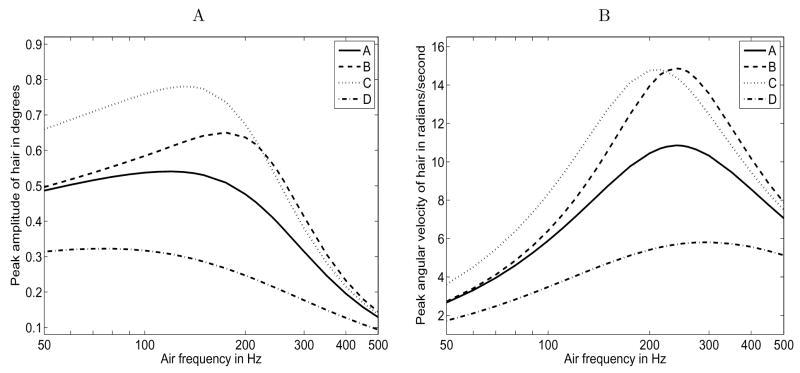Figure 4.
Comparison to Figure 12 of Humphrey et al. [12]: hair length = 500 μm; cercus diameter = 2 mm; and magnitude of driving flow = 5 mm/s. A (solid line): R = 1 ×10−15 N ms/rad, S = 4 ×10−12 N m/rad, hair diameter = 7 μm; B (dashed line): R = 0, S = 4 × 10−12 N m/rad, hair diameter = 7 μm; C (dotted line): R = 0, S = 3 × 10−12 N m/rad, hair diameter = 7 μm; D (dot-dash line): R ≈ 4.2 × 10−15 N ms/rad, S ≈ 6.0 × 10−12 N m/rad, hair diameter ≈ 5 μm. The cercus is modeled as a 200μm long length of cercus with π/4 radians on either side. The discretization scheme consists of 15 μm spacing between hair points and 28 μm spacing between cercal points. A. Maximum excursion in degrees as a function of frequency. B. Maximum velocity in radians/second as a function of frequency.

